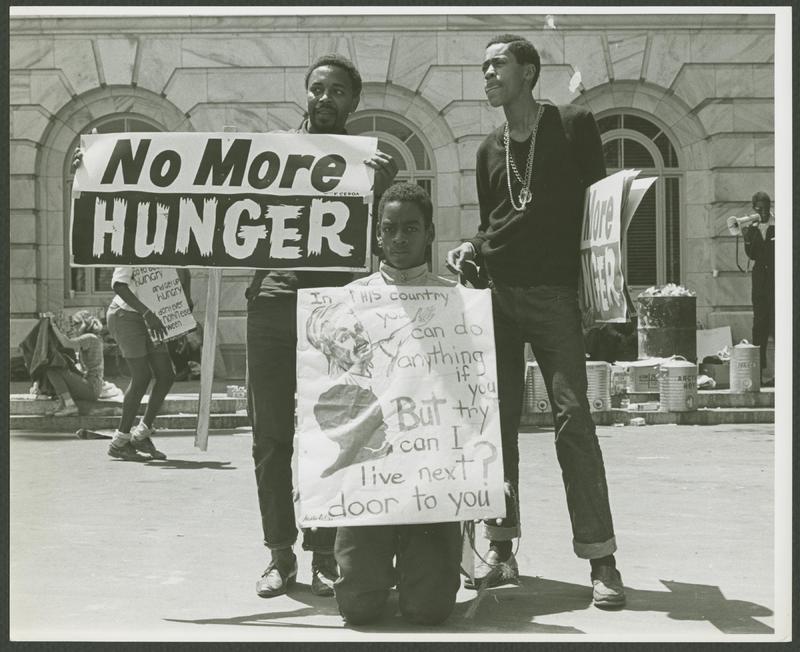1968 Poor People’s Campaign

Courtesy of Southern Christian Leadership Conference Records in the Manuscript, Archives and Rare Book Library (MARBL), Emory University
Building upon the landmark 1964 Civil Rights Act, Martin Luther King, Jr. expanded the scope of his civil rights activism by redefining the problem of social inequality to include all those in the U.S. who were poor, regardless of their race or ethnicity. Under the auspices of the Southern Christian Leadership Conference (SCLC), King began to organize a Poor People’s Campaign to address issues of economic justice and housing for the poor with a goal of rebuilding America’s cities.
After King’s assassination, the campaign, which included a plan to march on Washington, continued under the leadership of Ralph David Abernathy. On May 12, 1968, demonstrators occupied tents and shacks for six months on the National Mall. The makeshift housing was known as “Resurrection City.” Demonstrators were sent out to various federal agencies to protest and spread the message of the campaign, advocating for an “economic bill of rights.”